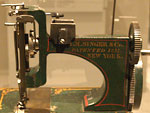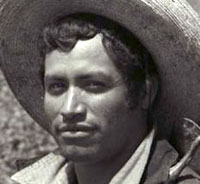Teaching materials in both Spanish and English can be difficult to find, and a new bilingual exhibit—inhouse, online, and scheduled to travel—from the Smithsonian Museum of American History explores a little known chapter in the history of Mexican labor. Bittersweet Harvest: The Bracero Program 1942-1964 looks at the largest guest worker program in American history, when an estimated two million Mexican men came to the United States on short-term labor contracts.
The Bracero program became the largest guest worker program in U.S. history.
The exhibit, according to the Smithsonian, tells a story of both exploitation and opportunity to earn money. Small farmers, large growers, and farm associations in California, Arizona, New Mexico, Texas, Arkansas, and 23 other states hired Mexican braceros to provide manpower during peak harvest and cultivation times.
"This exhibition allows us to explore complex issues of race, class, community and national origin while highlighting the irrefutable contributions by Mexican Americans to American society," said Brent D. Glass, director of the museum.
The Bracero Archive supplements Smithsonian exhibit materials.
The presentation is divided into multiple themes including Expectations, Family and Community, and Life in the United States. The Bracero History Archive supplements and complements the online exhibit. Almost 3,000 images, documents, and oral histories comprise the Bracero History Archive, and the public is invited to upload further contributions. Historian Steve Felasquez talks about how he gathered oral histories for the project and of their significance.
On the Archive site, Lesson Plans designed for students grades 6-12 engage students with photos, oral histories, and documents.

